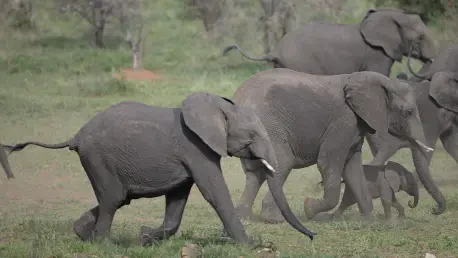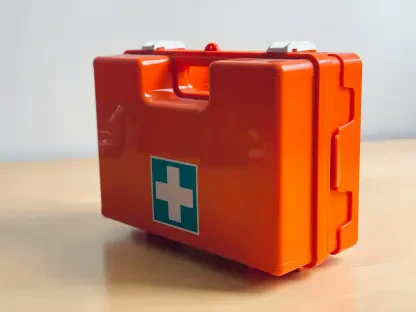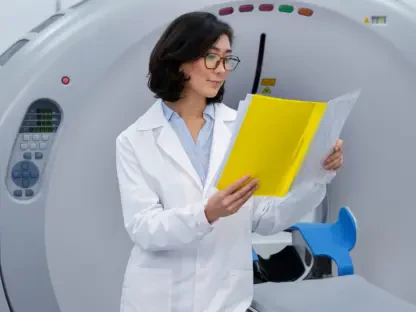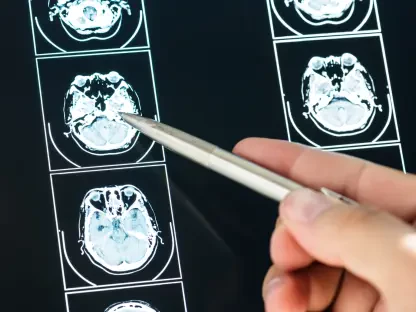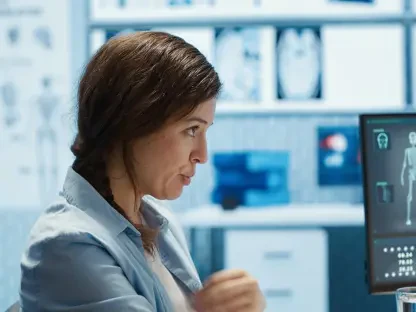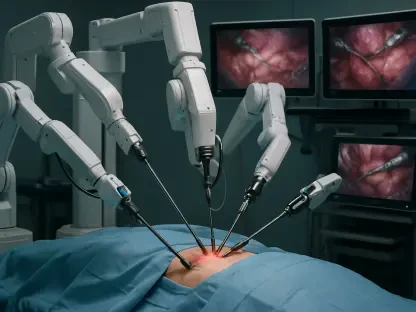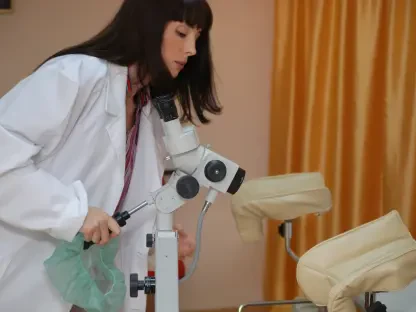Imagine a towering African elephant, weighing as much as 13,000 pounds, stepping delicately into a specialized station for a medical checkup, not out of coercion but through a bond of trust with its caretakers at Disney’s Animal Kingdom. This remarkable scene unfolds regularly as veterinarians and keepers collaborate to ensure the health of these majestic giants, particularly focusing on their feet. With foot health being paramount to an elephant’s mobility and comfort, advanced techniques like X-rays have become a cornerstone of preventative care. These annual exams provide critical insights into bone structure and alignment, helping to address issues before they escalate. This dedication to animal welfare, blending cutting-edge technology with compassionate relationships, showcases a model of care that prioritizes both science and empathy, ensuring that every step these animals take is supported by meticulous attention to their well-being.
Innovative Veterinary Practices at Work
Harnessing Technology for Elephant Health
At the heart of elephant care at Disney’s Animal Kingdom lies a sophisticated array of veterinary tools designed to monitor and maintain the health of these enormous creatures. Foot radiographs, commonly known as X-rays, are conducted annually to examine the intricate bone structures beneath an elephant’s massive weight. This technology allows veterinarians to detect subtle misalignments or early signs of wear that could compromise mobility over time. Beyond X-rays, the facility is equipped with state-of-the-art resources like CT scans and ultrasound machines, which support a wide range of diagnostics. Although much of this work happens behind closed doors in private habitats, the commitment to using advanced science ensures that every elephant receives tailored medical attention. This proactive approach not only prevents potential health crises but also extends the quality of life for animals that rely heavily on their feet for daily movement across expansive environments.
Public Insight into Animal Care
While the intricate process of elephant X-rays remains a backstage endeavor, Disney’s Animal Kingdom offers guests a glimpse into veterinary care through accessible areas like Rafiki’s Planet Watch. Here, visitors can observe routine health checks for smaller animals, gaining an appreciation for the meticulous processes that underpin animal welfare. These public-facing exams highlight the use of cutting-edge equipment and the expertise of the veterinary team, fostering a connection between conservation efforts and public education. The transparency of showcasing preventative care practices emphasizes a broader mission to inspire appreciation for wildlife. By bridging the gap between behind-the-scenes science and guest experience, the park illustrates how technology and dedication combine to safeguard animal health, reinforcing the importance of ongoing support for such initiatives in zoological settings around the world.
Building Trust and Collaboration
The Power of Positive Relationships
A key element in the success of elephant medical exams at Disney’s Animal Kingdom is the extraordinary trust established between the animals and their keepers. This bond, cultivated through years of patience and positive reinforcement, enables elephants to voluntarily participate in procedures like foot X-rays. Keepers spend countless hours building rapport, ensuring that even younger elephants feel secure during these critical health checks. The willingness of an elephant to position its foot precisely for imaging reflects a partnership grounded in mutual respect and understanding. This relational approach transforms potentially stressful situations into routine activities, minimizing anxiety for the animals. Such trust is not built overnight but is the result of consistent, compassionate interaction, demonstrating how emotional connections play a vital role in effective veterinary care for large species.
Teamwork Behind Every Step
Beyond individual relationships, the care of elephants at Disney’s Animal Kingdom thrives on seamless collaboration among a diverse team of professionals. Veterinarians, veterinary technicians, and keepers work in unison to design and implement personalized health plans based on detailed diagnostic findings. Each X-ray provides data that informs adjustments to diet, exercise, or habitat conditions to optimize foot health. This interdisciplinary effort ensures that no aspect of an elephant’s well-being is overlooked, from interpreting complex medical images to adjusting daily care routines. The synergy of expertise and hands-on care creates a holistic environment where preventative measures are prioritized, addressing potential issues long before they become serious. This collaborative model serves as a benchmark for zoological care, highlighting how teamwork and specialized knowledge can sustain the health of even the largest and most complex animals in captivity.
Reflecting on a Legacy of Care
Lessons from Compassionate Innovation
Looking back, the journey of elephant care at Disney’s Animal Kingdom reveals a profound commitment to blending technology with trust. The use of foot X-rays stands as a testament to how diagnostics shape proactive health strategies, ensuring that every elephant can move with ease across their habitats. The relationships forged between keepers and animals prove just as critical, turning routine exams into moments of cooperation rather than stress. This balance of science and empathy sets a standard that resonates beyond the park’s boundaries, offering insights into how conservation and care can coexist. As a result, the legacy of these efforts becomes a blueprint for others in the field, showing that dedication to detail transforms challenges into opportunities for betterment, leaving an indelible mark on the approach to wildlife health management.
Future Pathways for Elephant Welfare
Reflecting on past achievements, the path forward for elephant care suggests a continued emphasis on integrating advanced veterinary practices with behavioral understanding. Expanding access to cutting-edge tools like portable imaging systems could further enhance early detection of foot-related issues in various zoological settings. Additionally, sharing knowledge gained from trust-based training methods might inspire other facilities to adopt similar approaches, reducing stress during medical interventions. Investing in research to better understand elephant anatomy and biomechanics could also refine care protocols over time. These steps, rooted in the foundation laid by dedicated teams, promise to elevate standards of welfare, ensuring that future generations of elephants benefit from innovations and compassion alike. This ongoing mission underscores a broader commitment to safeguarding the health of these iconic animals for years to come.
